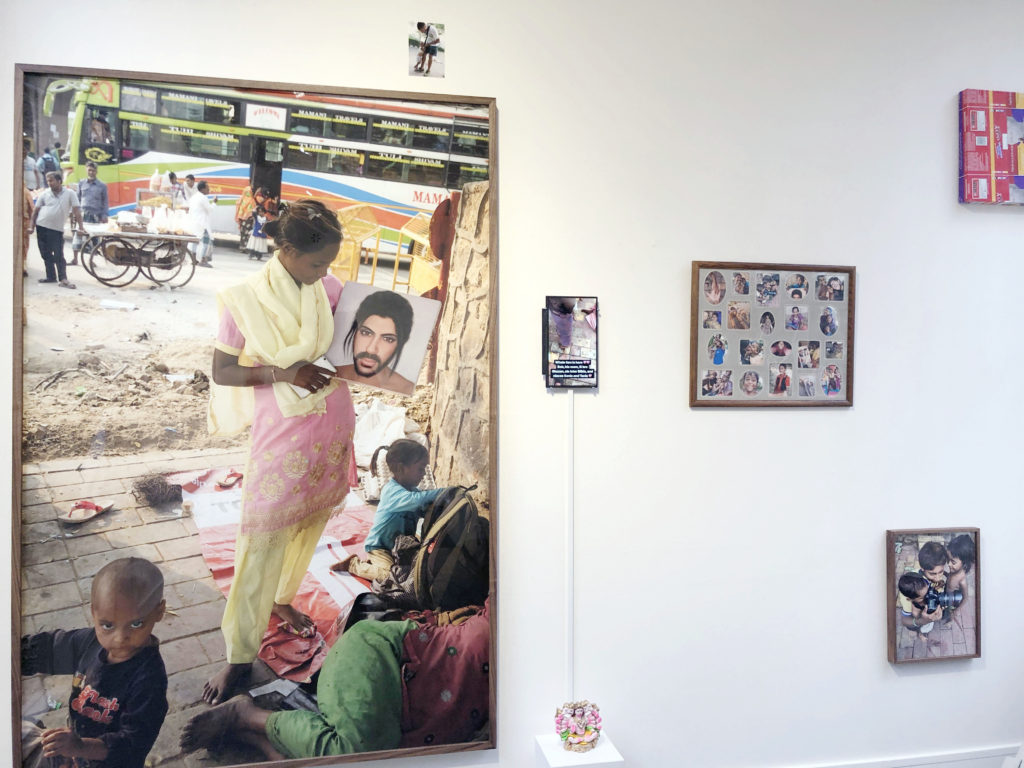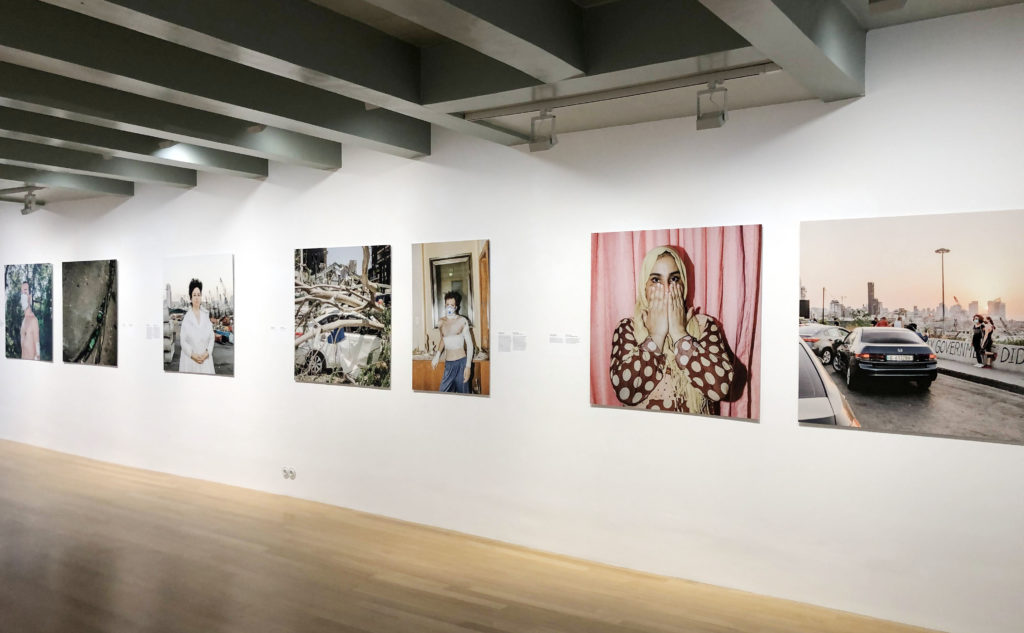The country I live in, the Netherlands, has imposed three lockdowns since the outbreak of the pandemic. Each time, cultural institutions such as art galleries and museums have been forced to close temporarily. I’d like to talk about one exhibition that narrowly managed to take place under these circumstances. This special exhibition is “Indefinite Identities. Photography in the Age of Sharing” at Huis Marseille, a photography museum in Amsterdam.
The exhibition’s overarching question is: “How profoundly are the internet and social media going to change long-standing museum processes in the future?”, and it introduces eight artists and photographers who use Instagram as a tool. Since the Netherlands is currently in the middle of its third lockdown, this exhibition has been forced to temporarily close. Coincidentally, this makes one think of the exhibition’s question in real-time.
Below, I’d like to introduce three of the photographers from this exhibition who left an impression on me.
The melody woven by a socially distant world
Just after Thomas Lohr moved from London to Paris, his busy days as a fashion photographer came to a halt. The lockdown, meant to stop the spread of Covid-19, placed huge restrictions on people’s daily activities. Lohr wanted to record this moment in time, so he began taking photos of the street from his view on the balcony.
Lohr’s tool was not a professional camera, but the camera app on his smartphone. This is because he realized that it wasn’t only important to take photos, but also to share the photos of his experience in real-time. Thus, he took 35,000 photos on his smartphone during the 56-day lockdown period from March 16th, 2020 to May 11th, 2020. As the best way to get feedback while at home, Lohr posted the photos to his Instagram every day.
The photos Lohr took from his balcony were ultimately published as a photo book titled “View Point.”
At the time, the balcony was Lohr’s only window to the outside world, and that limit brought about a uniform format to his photos. His birds-eye view shows people keeping a uniform distance from one another to social distance. Coupled with the stripes of the crosswalk, it’s reminiscent of sheet music. Even in a city that’s gone completely silent under lockdown, it’s as if you can use your vision to hear the melodies that people are weaving.
The future of photography seen in the blurred lines between photographer and subject
American-born, New York-based photographer Nick Sethi’s (1989-) parents immigrated to America from India, but he was raised American without ever learning his family’s mother tongue. In 2007, when he and his family moved to his family’s homeland of India for one year, he began taking pictures to get to know the locals who he couldn’t use language to communicate with. For Sethi, that was enough to feel gratified.
Thus Sethi, who had discovered the joy of using photography as a visual language, spent the next ten years going back and forth between India and America taking photos. He made full use of his camera and iPhone as communication tools in place of language, sometimes giving people his camera to take photos with or using Snapchat’s face swap function to swap faces with people. While the photos are full of the intimacy between him and his subjects, the ambiguity between the position of photographer and subject also draws attention to those blurred lines.
A photo of Sethi using Snapchat’s face swap function to swap his face with people he met in the streets of India. Although Sethi didn’t speak Hindi, he skillfully utilized photography as a visual language and tried to communicate with the people in India, where his family is from.
Having grown up without knowing his family’s homeland, Sethi’s 10-year journey through India must have been a search for his roots. However, in that process, he did not stick solely to self-expression, which is often the case for people who choose photography as a form of expression. Rather, he focused on collaborating with his subjects. This allowed him to literally blend in with the locals. By catching a glimpse of the photos that Sethi uploaded to his Instagram and stories each day, viewers could live vicariously through his experience and send him reactions through comments and likes. The high level of engagement between photographer, subject, and audience that ties together Sethi’s artwork suggests a new path or possibility for photographic expression, where rights to one’s likeness have often been a matter of debate.
The power of documentation often forgotten in an era of self-expression
On August 4th, 2020, a large explosion occurred in the port of Lebanon’s capital city, Beirut. This devastating tragedy caused over 200 deaths, 6,000 injuries, and left 300,000 people homeless. After the experience of photographing the affected area and victims, photographer Myriam Boulos (1992-) has this to say: “The image is not the priority…The documentation is more important.”
Thus, Boulos began to distance herself from the idea of constructing an image. She used to photograph people and then ask for their contact information afterward, but now that she realizes the subject’s testimony is what creates important documentation, she listens to their stories first.
Boulos uploaded a photo on Instagram of a man, a member of a Palestinian association helping the victims of the disaster, praying at the scene of the explosion. The photo was widely shared and talked about.
Photography has developed as a form of media that documents different periods, but since cameras have spread to the general public, they’ve become commonly known as a familiar tool for self-expression. Instagram is generally used with that aim too, but Boulos’s Instagram is not merely a platform to display her work; rather, it helps raise the world’s awareness about the current conditions in Lebanon. Her photographs prioritize a sincere view of the reality in front of her over creating polished photos, and we can see the same intimacy with the people standing in front of the camera as in the aforementioned Sethi’s works.
The pandemic that started last year changed the world as we know it. In the Netherlands, where I live, a lockdown was implemented last March and October. But this failed to halt the rapid increase in Covid-19 cases, so since Mid-December, the country has been in its third lockdown. Every time there is a lockdown, non-essential businesses are altogether closed, and cultural institutions such as art museums have been forced to close temporarily.
Until now, art museums and galleries have played an essential role for artists displaying their works. However, last year’s pandemic made it necessary for art museums and galleries to repeatedly open and close, which has led artists to become aware of the increasing importance of the internet as a tool. Instagram, which in particular is immensely popular, has started to become a public stage to present artwork. What we’re experiencing firsthand is precisely the answer to the question of this exhibition.
The three photographers’ Instagram accounts are below. I’d love it if you could visit each page. In a time where art galleries are closed, the only way you can check out their work is online.
Thomas Lohr @thomaslohrstudio
Nick Sethi @sicknethi
Myriam Boulos @myriamboulos
■Exhibition Information
Infinite Identities. Photography in the Age of Sharing
Dates: November 28th, 2020 – February 28th, 2021
Location: Huis Marseille(The Netherlands)
https://huismarseille.nl/tentoonstellingen/infinite-identities/
Photography Tomo Kosuga
Translation Aya Apton




